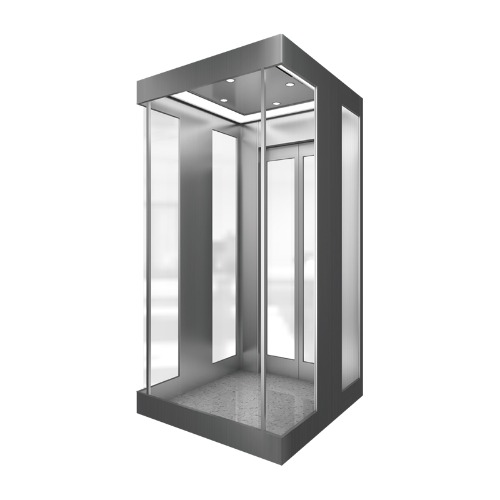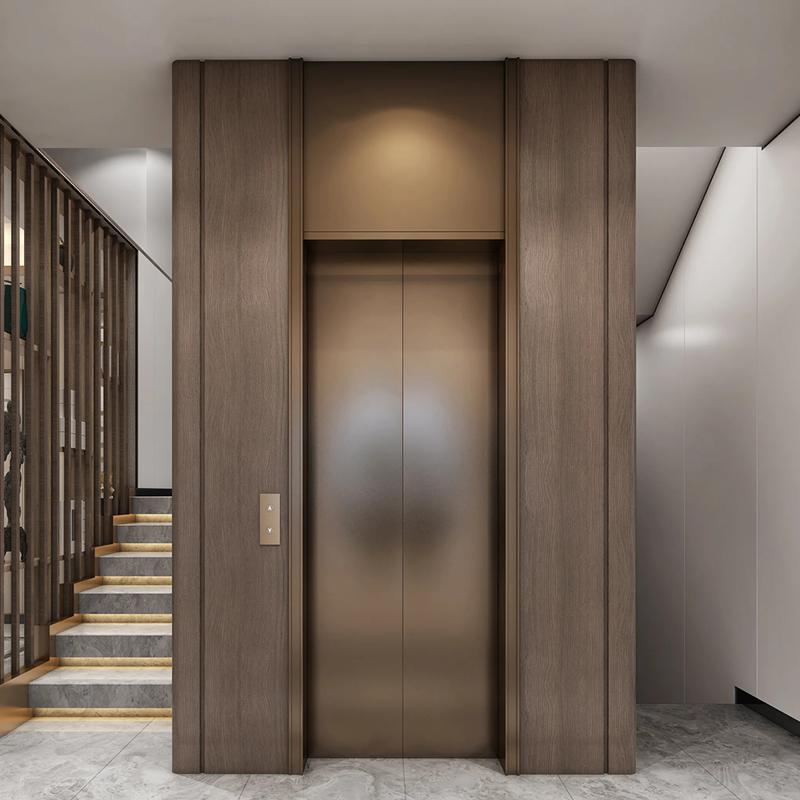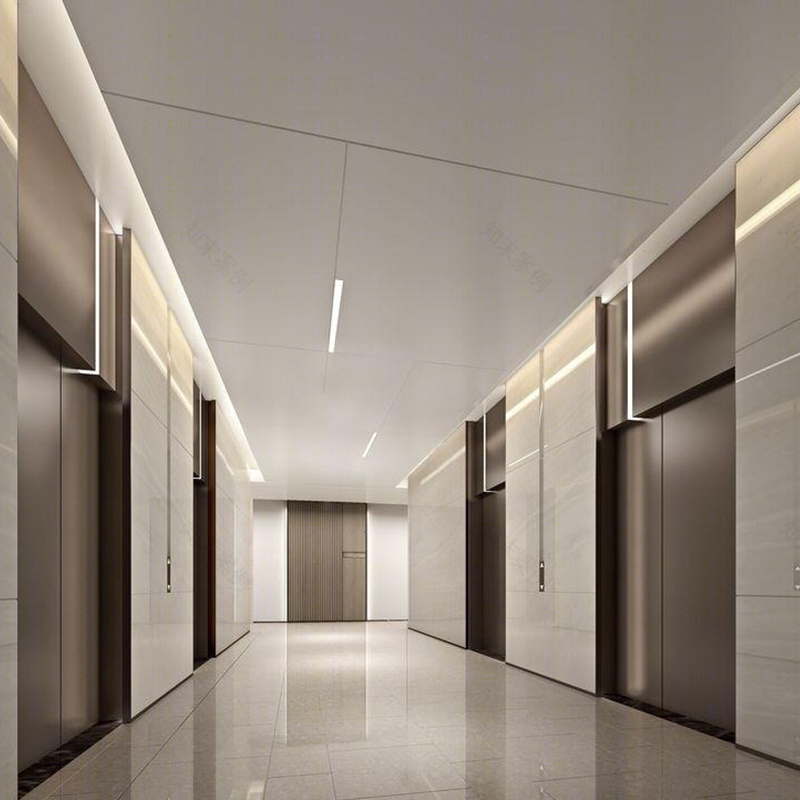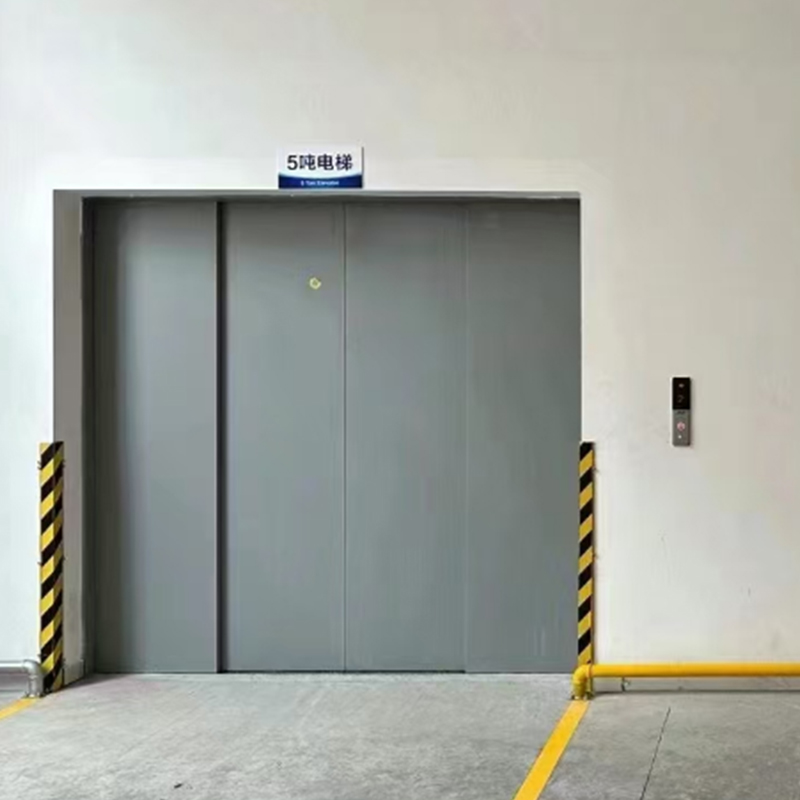
Can Traction Platform Elevators Meet the Efficient and Safe Needs of Industrial Cargo Transportation?
Posted by Admin | 22 Sep
Why Traction Platform Elevators Become Important Equipment in Industrial Cargo Scenarios
In industrial cargo transportation scenarios such as factory workshops, logistics warehouses, and construction sites, the efficiency and safety of vertical cargo transportation directly affect the overall production and operation rhythm. Traction platform elevators, with their unique structural design and performance advantages, have gradually become core equipment in these scenarios. Compared with ordinary cargo elevators, traction platform elevators adopt a traction-driven structure. Through the coordinated operation of steel cables and motors, they realize platform lifting, which can carry heavier cargo (usually 5-20 tons) with stable lifting speed. They are suitable for vertical transportation of heavy industrial goods such as mechanical equipment and raw material pallets. Their platform-type loading structure can directly accommodate standard cargo pallets or large goods without additional fixing devices, simplifying the cargo loading and unloading process and improving transportation efficiency. In addition, traction platform elevators have strong environmental adaptability, capable of operating stably in industrial environments with high dust levels and large temperature fluctuations. They can also be customized in terms of platform size and lifting height according to scenario requirements to meet the personalized needs of different industrial cargo transportation scenarios. Whether it is cargo transfer between production lines in factories or multi-layer cargo storage and transportation in logistics warehouses, traction platform elevators can balance efficiency and safety, which is the key reason for their wide application in the industrial cargo transportation field.
Installation Process and Safe Operation Specifications of Traction Platform Elevators
The installation process of traction platform elevators must strictly follow safety specifications to ensure stable operation of the equipment afterward. Before installation, the installation site needs to be surveyed to confirm whether the foundation bearing capacity meets the equipment requirements (usually requiring a bearing standard of more than 1.5 times the equipment’s own weight). At the same time, the installation positions of the motor, control cabinet, and guide rails should be planned, and sufficient space for operation and maintenance should be reserved. During the installation phase, guide rails are first fixed to ensure that the vertical accuracy error of the guide rails is controlled within 0.5mm/m, providing stable guidance for platform lifting. Then, the traction motor and steel cables are installed. The motor needs to be fixed on the load-bearing bracket, and the tension of the steel cables should be adjusted to a uniform state to avoid platform tilt caused by uneven stress. The control cabinet should be installed away from humid and dusty areas, and waterproof and dustproof treatment should be done well to ensure the normal operation of electrical components. Finally, the platform is assembled: the cargo platform is connected and fixed with guide rails and steel cables, and the firmness of each component connection is checked. In terms of safe operation specifications, before the equipment operates, it is necessary to check the wear of steel cables, the sensitivity of the braking system, and whether the limit switches are normal. During operation, overloading and unbalanced loading of goods are prohibited. Goods should be placed in the center to avoid unbalanced stress on the platform. Operators must receive professional training, be familiar with the location of emergency buttons and operation procedures, and non-professional personnel are prohibited from operating the equipment.
Key Steps for Daily Maintenance of Traction Platform Elevators
Daily maintenance is a core link to extend the service life of traction platform elevators and ensure operation safety. A basic inspection is required before daily use, including checking whether the steel cables have broken wires or wear (when the wear amount exceeds 10% of the diameter, they need to be replaced in time), whether the braking system can brake normally, and whether the platform door interlock device is sensitive. The equipment can only be started after confirming no abnormalities. In-depth maintenance is required every week: clean the dust and oil on the guide rail surface, apply lubricating oil to reduce friction between the guide rail and the platform; check the noise and temperature of the motor during operation. If abnormal noise occurs or the temperature exceeds 80℃, the machine should be shut down to troubleshoot faults; tighten all connecting bolts to prevent bolts from loosening due to vibration. Monthly maintenance of the electrical system is required: check whether the wiring of electrical components in the control cabinet is firm, remove dust on the surface of components, test the functions of limit switches and emergency stop buttons, and ensure the electrical system responds sensitively. A comprehensive inspection of the traction system is required every quarter: adjust the tension of the steel cables, check the lubrication of the motor bearings, replace aging seals, and prevent lubricating oil leakage from affecting equipment operation.
Troubleshooting of Common Faults and Emergency Handling Plans for Traction Platform Elevators
Traction platform elevators may encounter various faults during operation, and timely troubleshooting and emergency handling can reduce equipment downtime losses. A common fault is abnormal platform lifting speed: if the speed slows down, it is necessary to check whether the traction motor has insufficient power or the steel cables are too loose, which can be solved by overhauling the motor or adjusting the tension of the steel cables; if the speed is too fast, it is necessary to check whether the braking system fails, shut down the machine immediately to check the wear of the brake pads, and replace severely worn brake pads. Another common fault is platform tilt: mostly caused by uneven stress on the steel cables or deformation of the guide rails. It is necessary to shut down the machine to check the tension of the steel cables and adjust them to a uniform state. At the same time, check whether the guide rails are bent, and if deformation occurs, correct or replace them. In terms of emergency handling, if the equipment suddenly shuts down during operation, the operator should first calm the on-site personnel, cut off the power through the emergency button, check whether the shutdown is caused by overloading or triggering of limit switches, and try to start the equipment again after troubleshooting. If the platform is stuck in mid-air, climbing for rescue is prohibited. The emergency rescue system (such as a manual hoist) should be activated to lower the platform slowly, or professional maintenance personnel should be contacted to handle it on-site to ensure the safety of the rescue process.
Load Capacity Standards and Overload Protection Mechanisms of Traction Platform Elevators
The load capacity standard of traction platform elevators should be determined according to the equipment model and design parameters. The load capacity range of different specifications of equipment varies greatly (usually 5-20 tons). The rated load is clearly marked on the equipment nameplate, and it must be strictly followed in actual use to prohibit overloaded operation. Overloading will not only accelerate the wear of steel cables, damage the motor due to overloading, but also may cause safety accidents such as platform falling. To prevent overloading, traction platform elevators are usually equipped with multiple overload protection mechanisms: first, a weight sensor installed at the bottom of the platform. When the cargo weight exceeds 10% of the rated load, the sensor will trigger an alarm and cut off the lifting control circuit to prohibit the equipment from starting; second, an overload limit switch. When the platform sinks slightly due to overloading, the limit switch will be triggered to force the equipment to stop operating; some equipment is also equipped with a visual load display device that displays the cargo weight in real time, making it easy for operators to judge whether overloading occurs. In addition, during the use of the equipment, unbalanced loading of goods should be avoided (the unbalanced load should not exceed 20% of the rated load) to prevent faults caused by unbalanced stress on the platform and ensure the equipment operates safely within the load capacity standard.
Core Performance Differences Between Traction Platform Elevators and Ordinary Cargo Elevators
There are obvious differences in core performances such as load capacity, structural design, and applicable scenarios between traction platform elevators and ordinary cargo elevators. In terms of load capacity, traction platform elevators are designed for heavy industrial cargo transportation, with a rated load usually above 5 tons and a maximum of 20 tons, which can meet the transportation needs of large mechanical equipment and heavy raw materials; while the rated load of ordinary cargo elevators is mostly 1-5 tons, which is more suitable for the transportation of small and medium-sized goods. In terms of structural design, traction platform elevators adopt an open or semi-open platform structure without a car-type closed design, which is convenient for loading and unloading equipment such as forklifts and pallet trucks to enter and exit the platform directly, simplifying the cargo loading and unloading process; ordinary cargo elevators are mostly car-type structures, and cargo loading and unloading need to pass through the car door, resulting in lower efficiency. In terms of applicable scenarios, traction platform elevators are suitable for industrial scenarios such as factory workshops and logistics warehouses, capable of operating stably in complex environments, and can be customized in terms of lifting height and platform size; ordinary cargo elevators are more suitable for the transportation of small and medium-sized goods in places such as shopping malls and office buildings, with higher requirements for the operating environment and difficult to adapt to industrial environments with dust and high temperatures. In addition, in terms of operating speed, traction platform elevators have a slower lifting speed (usually 0.2-0.5m/s), focusing on operating stability; ordinary cargo elevators have a relatively faster speed (0.5-1m/s), focusing more on transportation efficiency.

-
 Founding Road, Qidu Linhu Economic Zone, Wujiang City, Jiangsu Province, China
Founding Road, Qidu Linhu Economic Zone, Wujiang City, Jiangsu Province, China
-
 [email protected]
[email protected]
-
 +86 17701557926/+86 0512-63818375
+86 17701557926/+86 0512-63818375


 En
En English
English русский
русский Español
Español عربى
عربى





